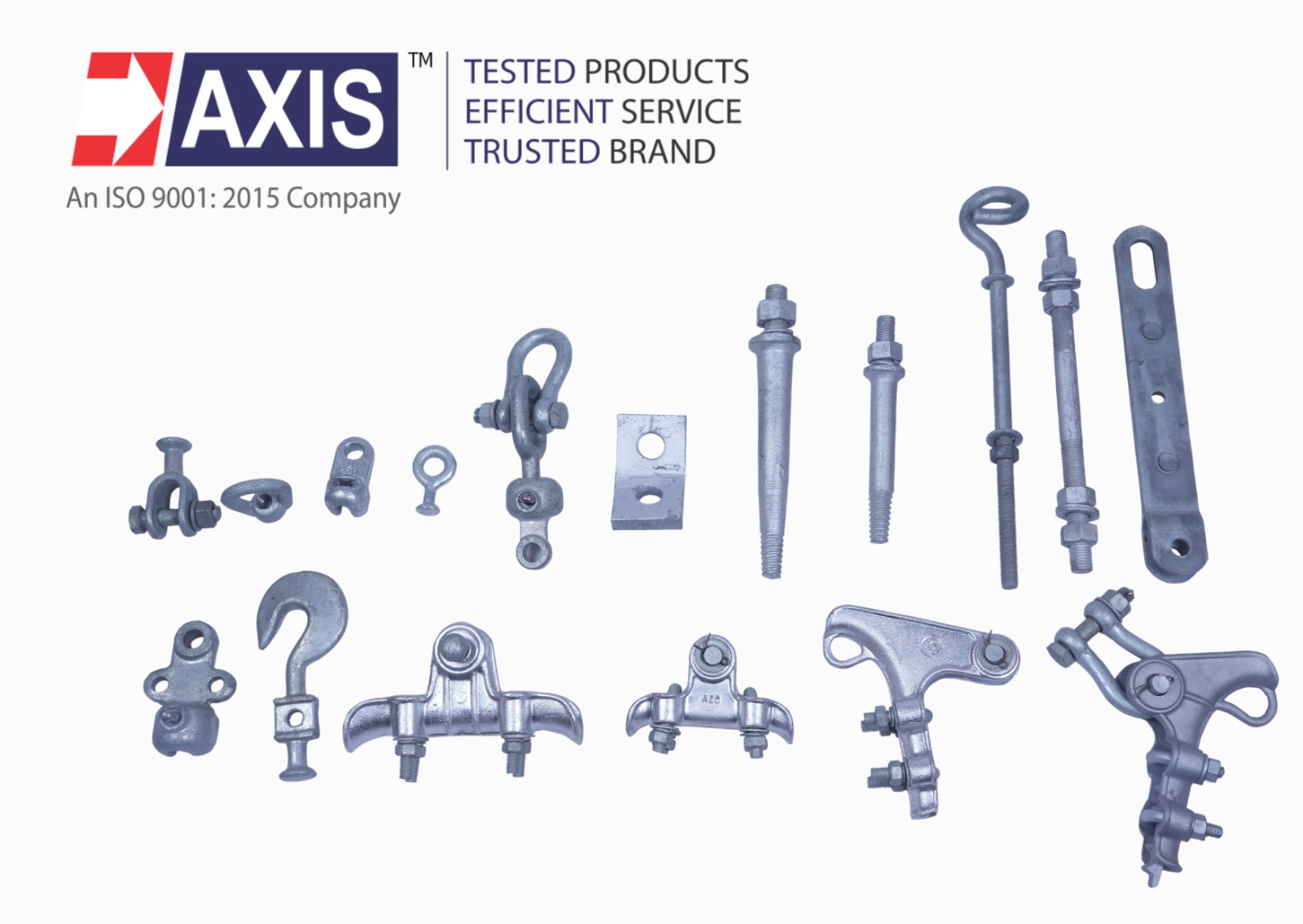Insulators
Let’s understand their types in detail:
Pin Insulator: This is the most common type you will see in smaller transmission or low-voltage distribution lines. They have a single porcelain, glass body, or polymeric insulator with a threaded metal pin at the bottom to secure it to the cross-arm and other supporting structures. These insulators are suitable for low, medium, and high-voltage lines. Their limited flashover voltage and mechanical strength, make them unsuitable for higher voltages. We manufacture and supply pin insulators in polymer and porcelian, depending on the requirement.


Disc Insulator: Also known as strain insulator and tension insulator. They are designed to absorb the tension in the conductors and keep them at a safe distance from supporting structures. These insulators are used in areas where tension in conductors is the highest, like where transmission lines change direction or encounter dead-ends.


Stay Insulators: Also known as guy-wire insulators, these are installed in transmission lines. They provide insulation and mechanical support to the guy wires that stabilize transmission towers. These insulators prevent current from flowing from the tower structure to the ground through the guy wires. They are made from porcelain to withstand mechanical loads and electrical stresses. They maintain the stability and alignment of transmission towers, especially in areas with high wind loads or uneven terrain.

Shackle Insulators: These are used in transmission lines when the line needs to change direction or pass through obstacles. They are attached to supporting structures with D iron or bolts. Shackle insulators are ideal for low- and medium-voltage applications and are often seen in distribution lines.

Talk to our engineers!
Supporting Hardware
They provide support and insulation allowing for efficient power transmission.
Anchor Shackle: Made from forged steel, this component connects the insulator chain to the cross-arm. In transmission lines, it attaches composite polymeric insulators to the pole.

Socket Eye: Made from forged steel, this component connects the suspension or anchoring clamp to a polymeric insulator. In transmission lines socket eye functions as a part of the insulator chain. It links suspension or tension clamps to the insulator chain.

Ball Eye: It is also a part of the insulator chain, and it attaches ball and socket insulators to other associated hardware such as anchor shackles to Polymeric insulators. The combination of a ball oval eye and an anchor shackle, or the combination of a circular ball eye and U Bolt Set is a common pair on distribution towers.

U Bolt Set: U-bolts serve as fasteners in transmission line suspension assemblies. This hardware clamps objects and attaches to supporting structures, providing stable connections between components. U-bolts are designed to secure suspension clamp assembly chains or other hardware to poles or towers in transmission lines.

Anchor Clamp: The body of Anchoring Clamps is made from aluminum alloy, but the bolts, nuts, and washers are made from galvanized steel and stainless steel. They are designed to anchor the line conductor from the pole when the line’s direction is being changed at extreme angles. You will find them installed at the start and end of the line or the spot where the line is taking extreme turns.

Suspension Clamp: The body of Suspension Clamps is made from aluminum alloy, but the bolts, nuts, and washers are made from galvanized steel and stainless steel. These clamps support and safely carry cables at each intermediate pole. Unlike anchor clamps, they are installed everywhere on the pole except at the start, end, and extreme turns.

Guying Accessories
These accessories are designed to support the guyed poles or towers in transmission lines.

Stay Rods: Also known as Anchor Rods and Guy Rods, they are designed to anchor the poles to the ground. They are manufactured from mild steel or carbon steel depending on the requirement.
Stay Plate: Also known as anchor plates, they are used as a part of a Stay Set to install the Stay Rod. They are manufactured from prime steel sheets and come with slots or holes depending upon the anchor rod size and construction.
Guy Thimble: Guy thimbles ensure a gap by preventing crushing and maintaining a safe distance between two adjacent conductors.
At Axis, our team of over 50 engineers are ready to assist you with designing, installing, and testing your Electrical Hardware. Clients worldwide trust and install our components in various settings, including substations, data centers, factories, and transmission and distribution towers.
